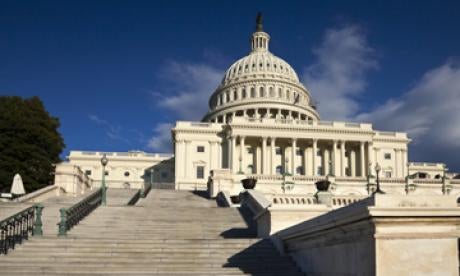- Because of the prolonged government shutdown, the Centers for Medicare & Medicaid Services (CMS) may encounter delays in promulgating final payment rules that would otherwise be effective January 1, 2014.
- It is reasonable to expect that CMS will miss the November 1, 2013 statutory deadline to publish final rules due to the staff shortage from the shutdown as well as the complexity of many significant rule changes that were proposed earlier this year.
- There is precedent for delaying the effective date of an entire payment rule to allow for the proper 60-day notice and comment period, and there are cases where only portions of a rule that represent significant changes have been delayed.
- Providers should assess whether CMS has taken the requisite time to properly account for stakeholder input through the comment process, and, if not, they should identify possible remedies.
Despite the short-term resolution to the government budget and debt-ceiling “crisis,” health care providers serving approximately 50 million Medicare beneficiaries may be waiting longer than usual this year to see what rates they will be paid in 2014 as a result of the government shutdown. Any delay is likely to cause great angst amongst providers, including physicians, hospitals, laboratories, and post-acute care facilities such as home health agencies, whose livelihood depends to a significant degree on the terms of annual reimbursement rules. These include the Physician Fee Schedule (PFS), the Hospital Outpatient Prospective Payment System (HOPPS), the Clinical Laboratory Fee Schedule (CLFS) and the Home Health Prospective Payment System (HHPPS).
As we noted prior to the government shutdown, over three quarters of the staff at CMS, the federal agency that administers the Medicare and Medicaid programs, are subject to a furlough. Most of the remaining staff are funded through non-annual discretionary appropriations, such as those who are working to implement the health care marketplaces under the Affordable Care Act. Therefore, even though the government reopened on October 17, 2013, the likelihood that CMS and other executive branch offices will finalize a series of important 2014 Medicare payment rules by the November 1st statutory deadline is becoming increasingly doubtful.
Much depends on the progress executive branch officials had already made on specific payment rules before the shutdown, on how fast staff are able to ramp up now that it is over (for the time being), and on competing priorities and deadlines for the Administration. Adding to the complexity of finalizing the payment rules this year, CMS had proposed numerous significant changes that could greatly impact reimbursement for calendar year 2014. Some of the most significant changes that were proposed in earlier rulemaking include:
|
Home Health Prospective Payment System |
|
|
Hospital Outpatient Prospective Payment System |
|
|
Clinical Laboratory Fee Schedule |
|
|
Physician Fee Schedule |
|
Legal Background for Payment Rule Timing
Various laws and executive orders govern when a Medicare payment rule must be posted for public comment, the required length of time of the notice and comment process, and when the final rule is to become effective.
The Administrative Procedure Act (APA) normally requires a 30-day delay in the effective date of a rule. Furthermore, the Congressional Review Act (CRA) generally requires an agency to delay the effective date of a major rule by 60 days in order to allow for congressional review of the agency action. Finally, in order to receive the proper stakeholder input, the Paperwork Reduction Act (PRA) requires CMS to provide a 60-day notice and comment period before promulgating a rule. Thus, CMS has a statutory deadline of November 1, 2013 if it wants to have an effective date of January 1, 2014 for a Medicare payment rule.
A comment period of at least 60 days is the default under Executive Order 12866, § 6(a)(1) (Sept. 30, 1993), Regulatory Planning and Review, as amended by Exec. Orders 13258 (Feb. 26, 2002) and 13422 (Jan. 18, 2007) (providing that “each agency should afford the public a meaningful opportunity to comment on any proposed regulation, which in most cases should include a comment period of not less than 60 days”).
If CMS finds good cause to waive the delay in the effective date of a final rule because the delay is unnecessary, impractical, or contrary to the public’s interest, or the statute permits waiving the delay, the final rule may become effective upon publication.
A History of Delays
CMS regularly misses the November 1 deadline, and in some cases the final rule is published in late November. In certain instances, CMS has delayed the effective date of a payment rule to account for the 60-day notice and comment period as well as the 30-day minimum effective date requirement. For example, for the CY 2003 PFS, CMS delayed the effective date from January 1 to March 3 after publishing the final rule on December 31, 2002. During the last government shutdown in 1995, CMS published the CY 1996 PFS on December 8th and retained an effective date of January 1, 1996 for the overall rule, but extended comments for new or revised payment codes until Feb 6th. The agency has used similar processes for other payment rules, such as the CY 2008 HOPPS rule that extended the comment period until the end of January for certain codes that were significantly changed.
Recent history seems to indicate that if the rules are delayed into December, there is a small, albeit infrequently used, possibility that rules/codes that are significantly changed may have a delayed comment and effective date. However, CMS has also ignored such deadlines in the past and, through a variety of methods, has been able to justify shorter notice and comment periods and effective dates less than 60 days from original publication.
Conclusion
It is reasonable to believe that due to the government shutdown and ensuing staff shortage, CMS could incur significant delays in publishing Medicare final payment rules, in some cases until well after the “standard” statutory November 1st deadline. While CMS has extended notice/comment periods and effective dates, it has done so rarely and only when delays relate to significant substantive changes made in the rules. Because a series of complex and economically significant changes to reimbursement rates and rules has been proposed for 2014, stakeholders should work to ensure that CMS provides adequate time for consideration of industry input via notice and comment in compliance with the spirit and letter of the law.





 i
i


